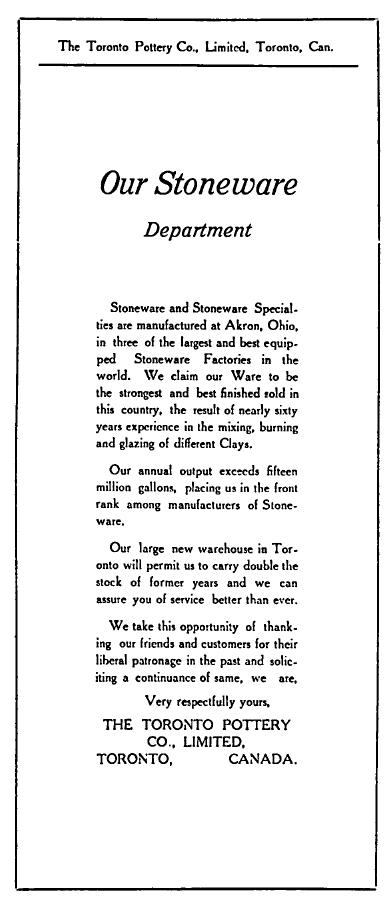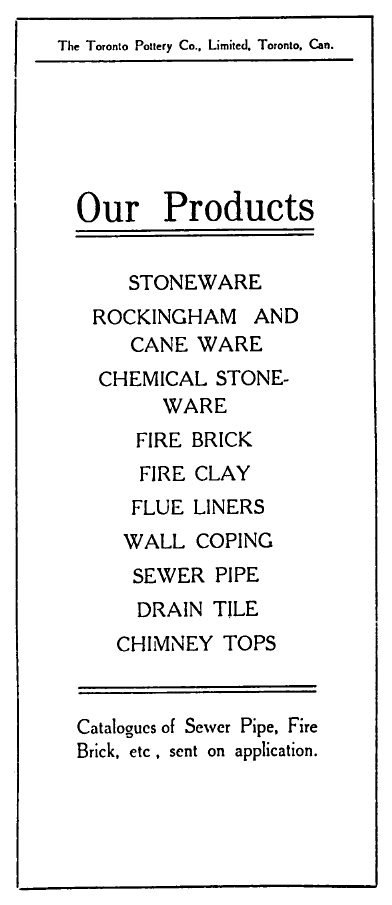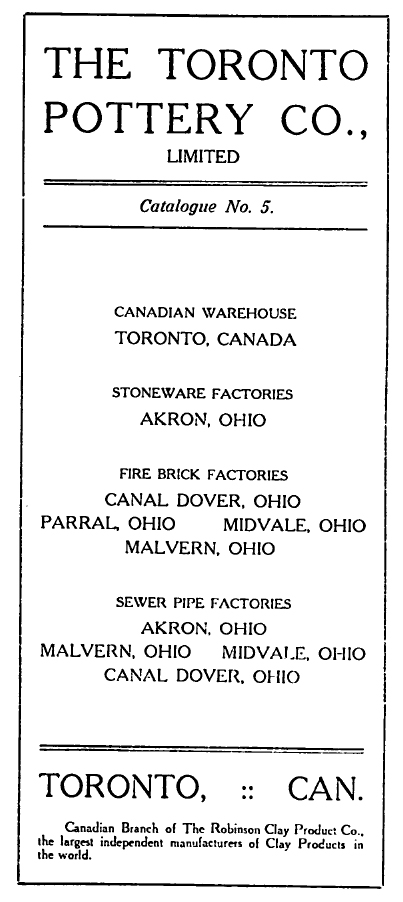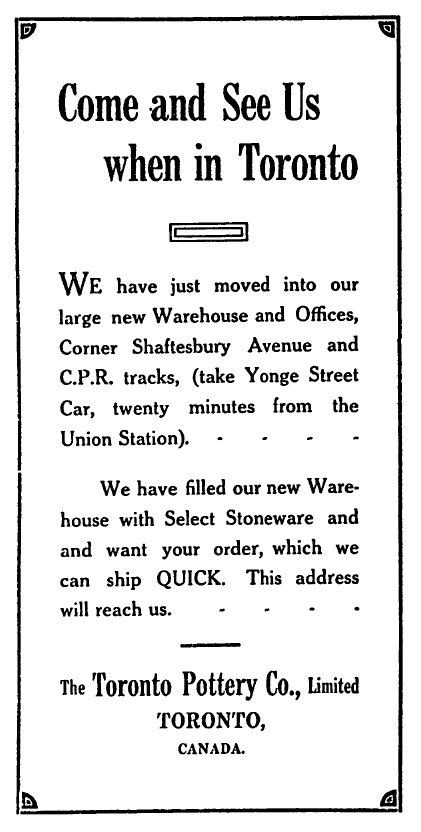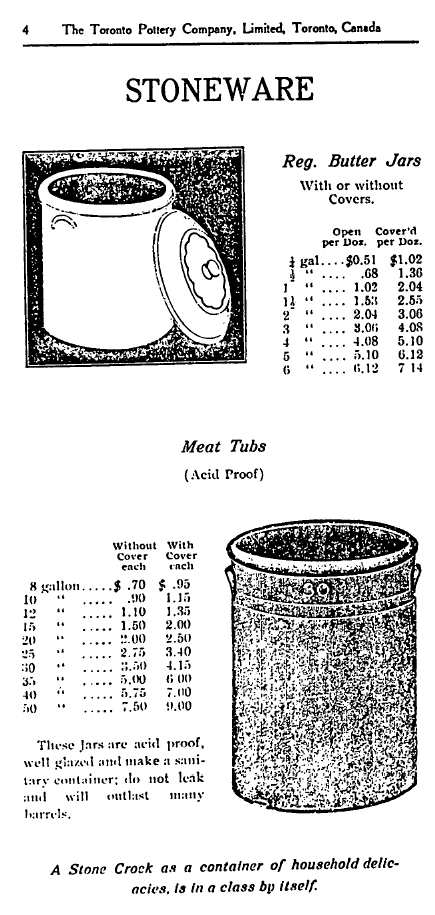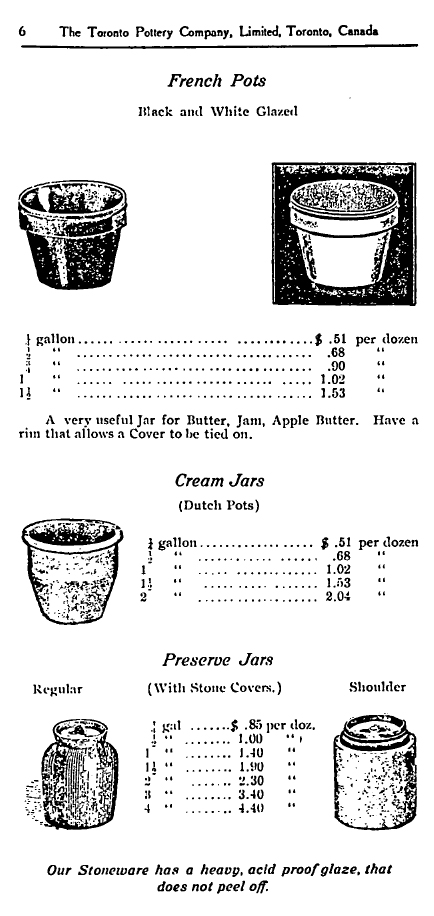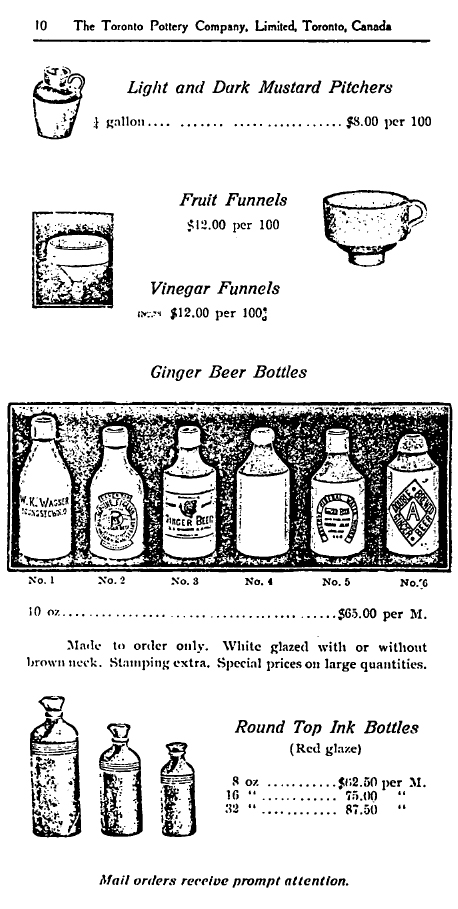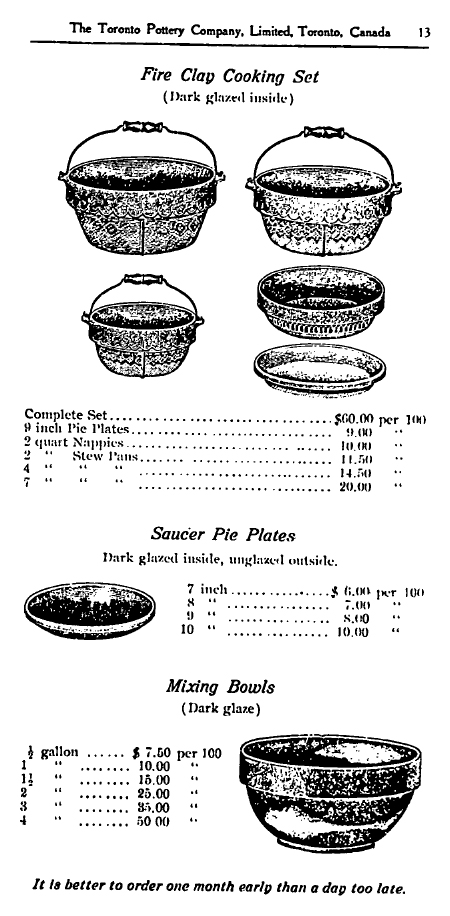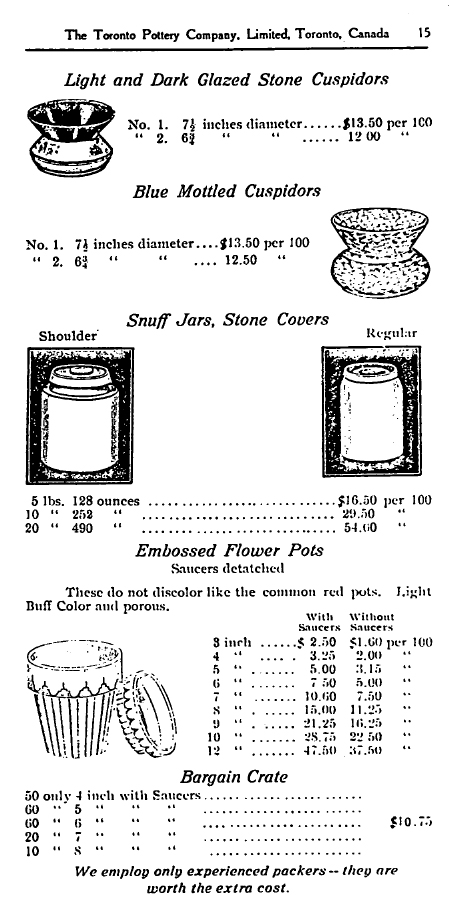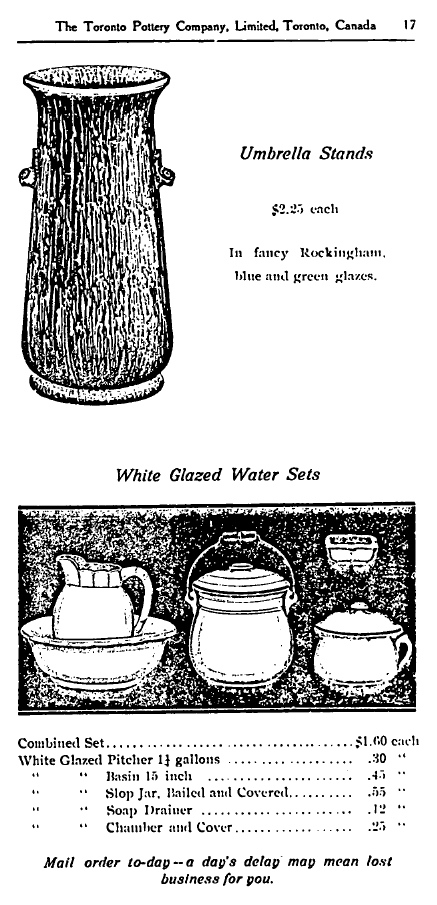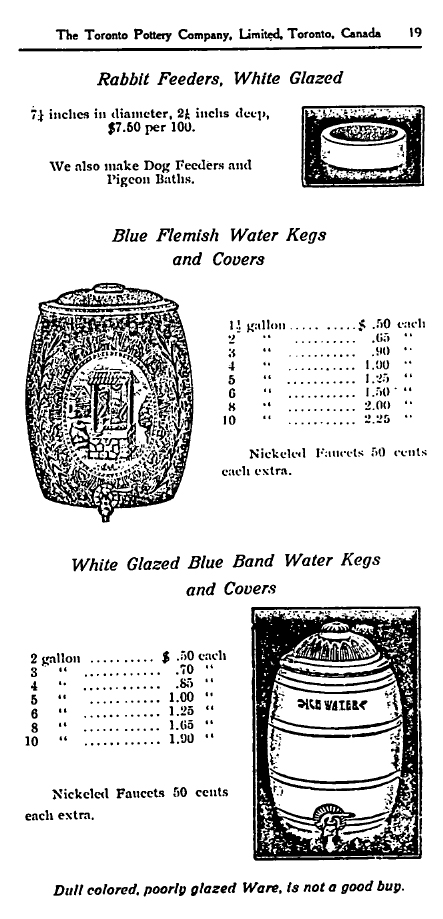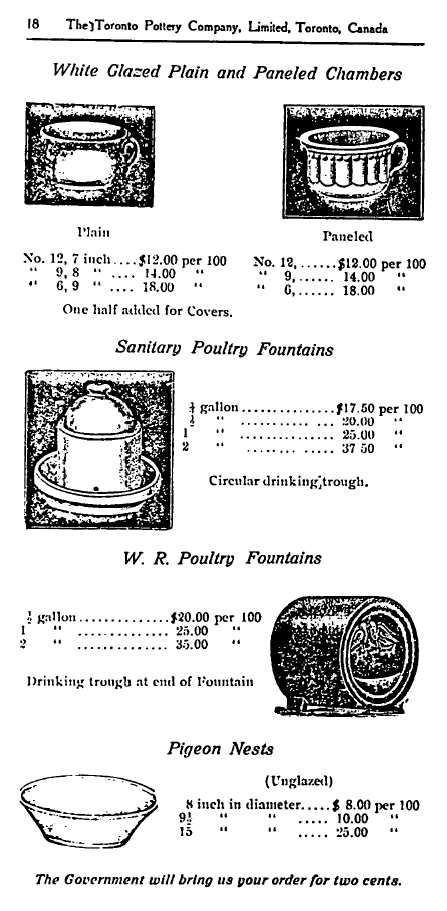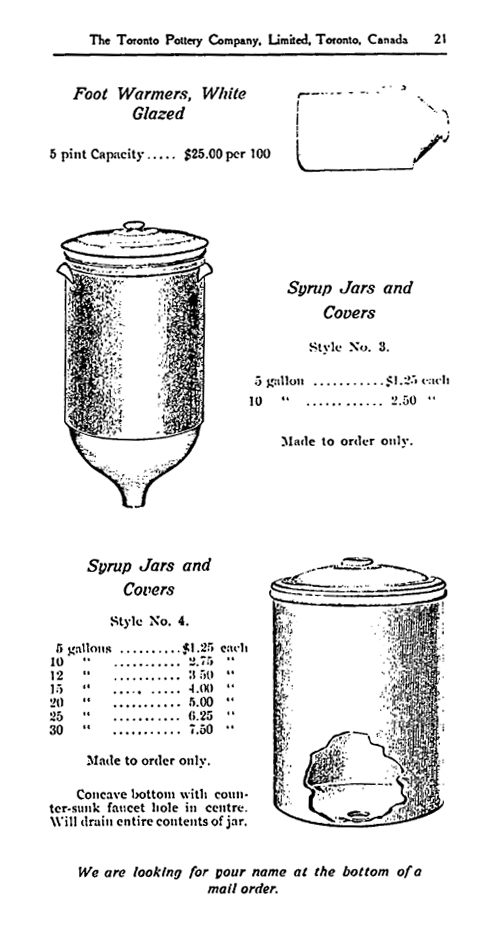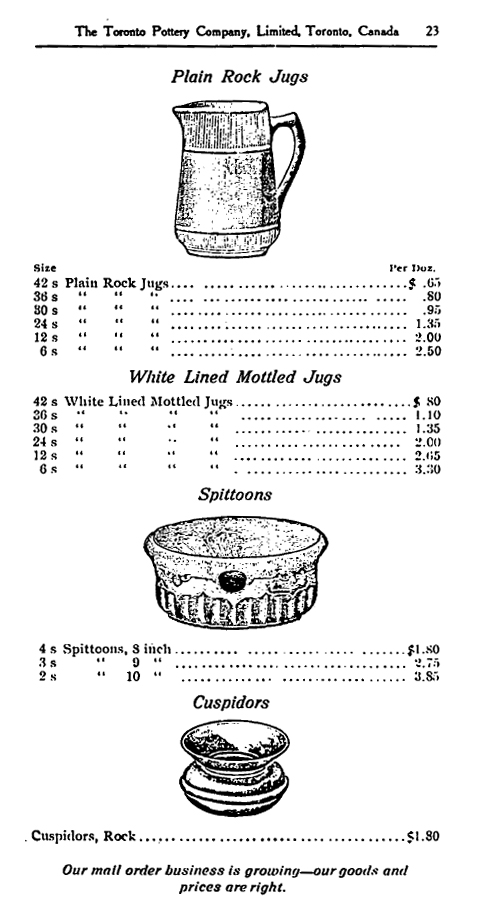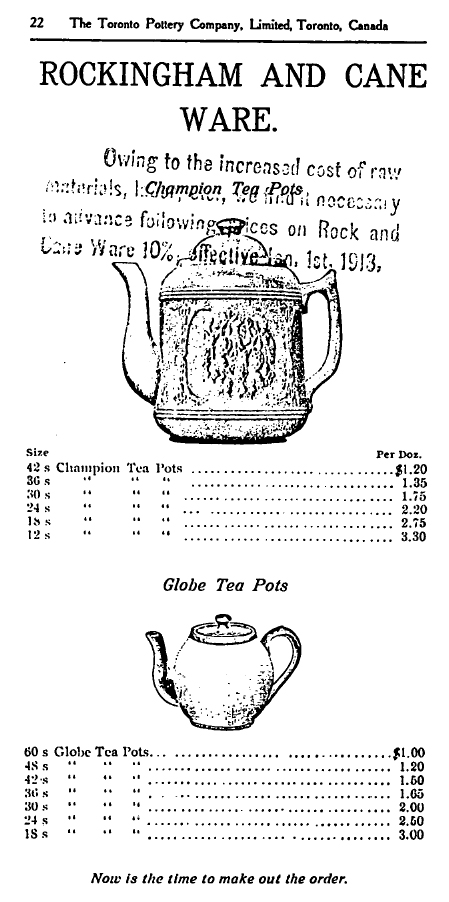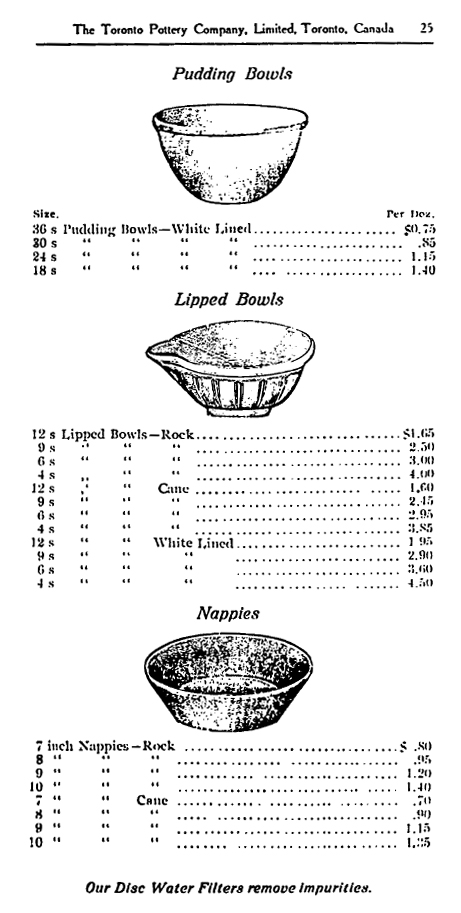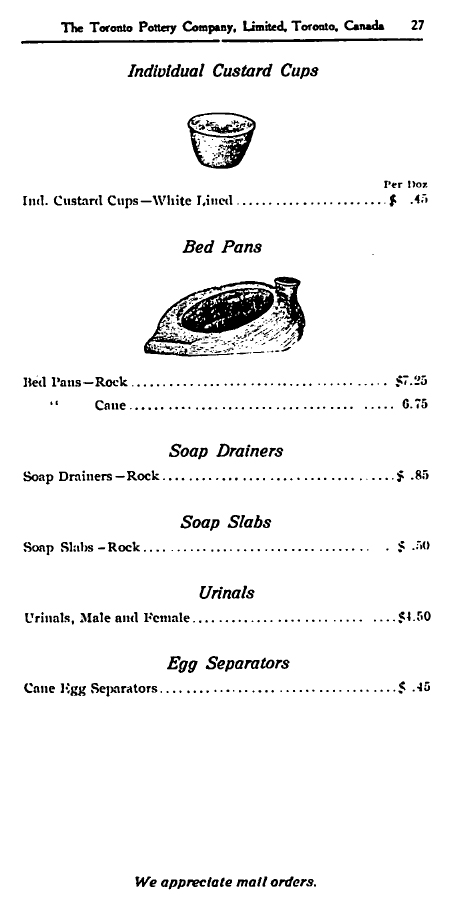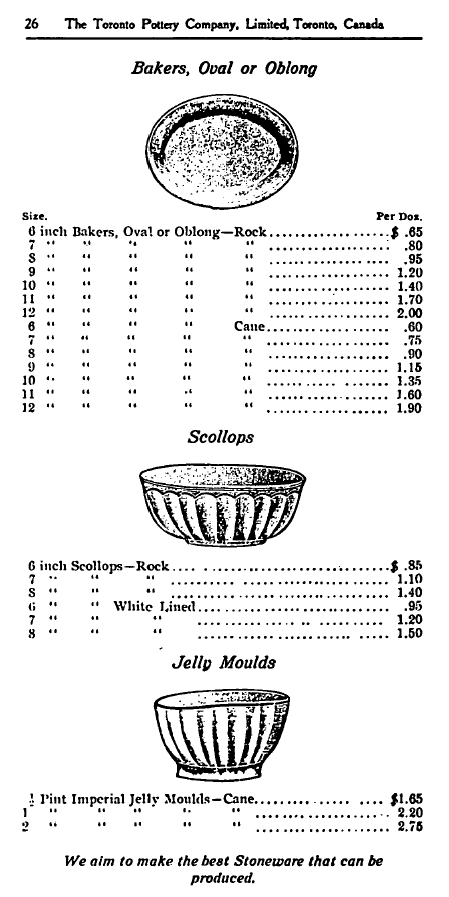Articles
A Toronto Pottery Company Catalogue1
La Toronto Pottery Company, filiale en propriété entière d'une société d'Akron (Ohio), était un des grands fournisseurs d'articles de faience au Canada pendant le premiere quart du XXe siècle. Plutôt que de produire elle-même ses marchandises, la société les importait des Etats-Unis; elle décorait églaement cruches et bouteilles sur commande au gré de chaque client. Vu la place qu'a tenue cette société sur le marché ontarien de la faience, cette réimpression d'une photocopie de son catalogue de 1912 env. (emplacement de l'original non localisé) aidera a identifier la poterie vendue et utilisée au Canada à cette époque.
1 At the beginning of the twentieth century the pottery industry in Ontario was dominated by a small number of factory potteries producing stoneware, Rockingham ware, and bristol ware. The small country craft pottery of the mid nineteenth century had all but disappeared from the landscape and by 1911 there were only five country potteries in operation.2 The more than fifty country workshops had been replaced by six factory potteries located in urban centres.
2 The factory potteries were able to survive competition by producing large quantities of standardized containers by jiggering, slip-casting, or the use of semi-automatic presses. Only a small percentage of the wares were thrown by hand, the traditional method of the small country workshop. The factory potteries included R. Campbells' Sons, John Cranston and Son, and Foster Pottery Company, all of Hamilton; London Crockery Manufacturing Company and London Pottery Manufacturing Company, of London; and the Toronto Pottery Company of Toronto. All were Canadian-owned except for the Toronto Pottery Company, a wholly-owned subsidiary of the Robinson Clay Product Company of Akron, Ohio. The unique status of the Toronto firm did not diminish its share of the Canadian market for it was a major supplier of ceramics in Canada during the first quarter of the twentieth century.
3 Instead of producing its own wares the Toronto Pottery Company imported wares from the United States. Although the tariff on imported crockery was high, it still placed foreign manufacturers in a favourable position in the Canadian market. Conversely, Canadian producers were at a distinct disadvantage. Their efforts to have the tariff increased never succeeded in reducing the flow of goods into this country. William Glass, father of S.F. Glass and manager of the London Crockery Manufacturing Company, outlined the disadvantages of the Canadian-owned factories in a letter to the Honourable John Carling, federal Minister of Agriculture:
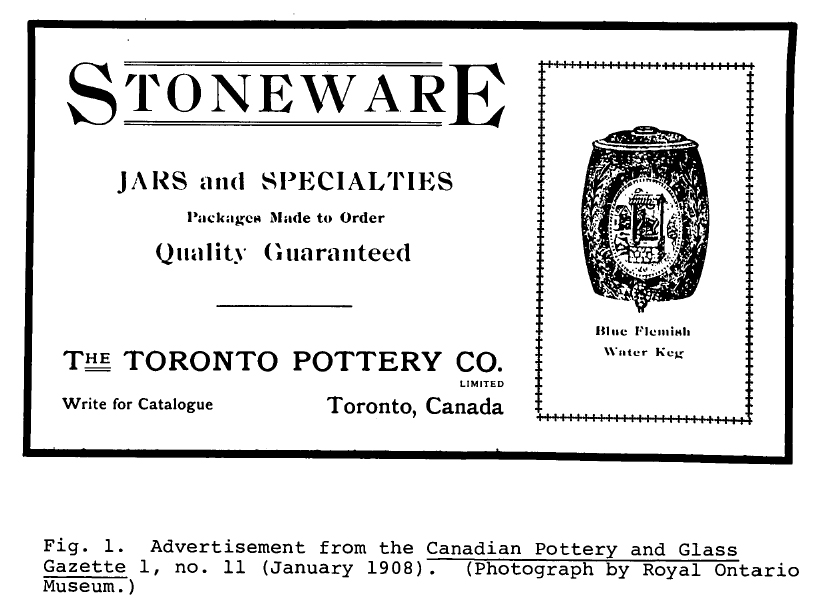 Display large image of Figure 1
Display large image of Figure 14 In this unfavourable climate the Toronto Pottery Company was a formidable opponent. The company was formed in Toronto in 1899 and granted letters patent as an Ontario corporation in 1904. The offices of the corporation were those of the Robinson Clay Product Company of Akron, Ohio, one of America's largest producers of stoneware. The Toronto Pottery Company had authorized capital of $10,000 and had its head office and warehouse at 75-81 Cottingham Street, a few blocks north of Bloor Street. In 1912 the head office was moved to 617-618 Dominion Bank Building and the warehouse was located on Shaftesbury Avenue at the C.P.R. tracks, a short distance north of Cottingham and east of Yonge Street. By 1924 the head office had moved to the Temple Building at 62 Richmond Street West.
5 From its founding the Toronto Pottery Company flourished. The Mercantile Agency Reference Books, the credit-rating manuals issued by Dun, Wiman & Company, predecessor of Dun & Bradstreet, reported the pecuniary worth of the corporation as $35,000 in 1914. By 1919 it had increased to $75,000 and the next year to $125,000. The rapid growth in the company's credit rating is one indication of its ability to capture a large part of the Canadian market at a time when the overall demand for stoneware, Rockingham ware, and bristol ware was declining. The company's financial records for 1921-23 indicate annual sales of stoneware amounting to $93,249, $107,996, and $105,482 respectively. These represented 54%, 50%, and 39% of the company's total sales during this period, with the decline in stoneware sales being replaced by increased sales of firebrick and sewer pipe.
6 In the early 1920s the parent company in Akron decided that all its subsidiaries should carry its name. Thus, the Robinson Clay Product Company (of Canada), a still active corporation with headquarters in Concord, Ontario, was formed on 24 March 1924 to purchase the Toronto Pottery Company. The change in name from Pottery Company to Clay Product Company reflected the decline in demand for stoneware and the growth in sales of firebrick, stoneware sewer pipe, and other clay products. The Akron company had apparently discontinued the production of stoneware, Rockingham ware, and yellow ware in 1914.4 The Toronto company, which had continued to import large quantities of stoneware as late as 1923, must have purchased them from other firms and, indeed, a 1923 reference notes just such a purchase from another American clay products company.5 After 1924 the name of the Toronto Pottery Company was no longer used although the corporation was not formally closed until 1935.
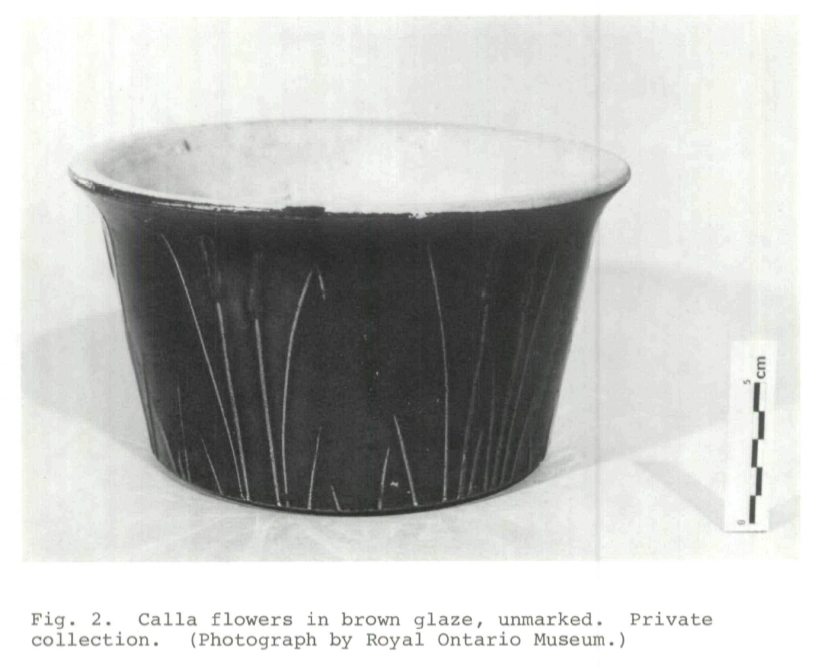 Display large image of Figure 2
Display large image of Figure 2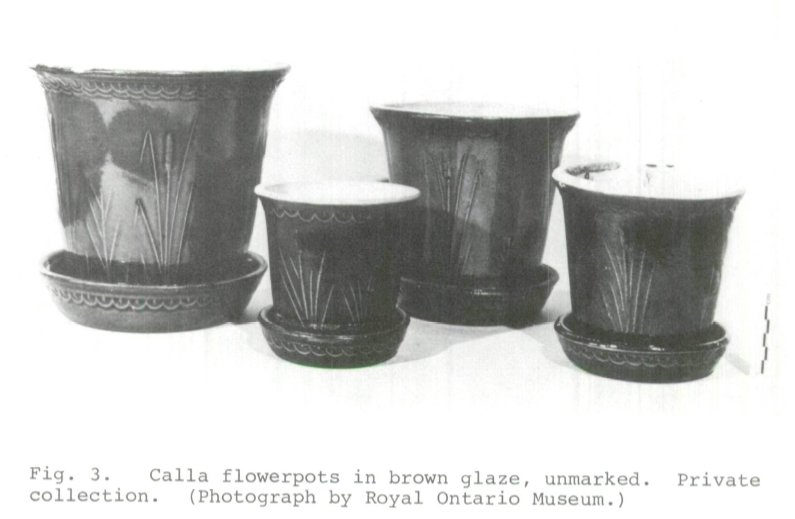 Display large image of Figure 3
Display large image of Figure 37 The catalogue reproduced in the following pages was distributed to customers ca. 1912. The selection of stoneware, Rockingham ware, bristol ware, and yellow ware illustrated in its pages far exceeds the production of any Canadian-owned firm.6 Since the Toronto Pottery Company supplied so much crockery to the Canadian market, the catalogue should help in identifying styles of ware that were sold and used in Canada in the first quarter of the century. The catalogue is similar to the 1903 catalogue of the parent firm, suggesting that previous editions of the Toronto catalogue might also be similar to that 1903 edition.
8 A number of types of pottery illustrated in the catalogue were never known to have been produced by Canadian firms. These include the embossed, Flemish, cobalt blue, decorated growlers (cat. p. 12), water kegs (cat. p. 9), water filters (cat. p. 20), glazed calla flowerpots (figs. 2, 3), hanging baskets (cat. p.16), and embossed flowerpots (cat. p. 16). The Robinson Clay Product Company advertised several styles of teapot, including Rebecca-at-the-Well teapots in eight sizes, trilby teapots in five sizes, and cloverleaf teapots in four sizes;7 the Toronto company advertised the Champion teapot, similar in design to that produced by R. Campbells' Sons of Hamilton. The Toronto company offered its customers the service of stamped bottles and jugs with a wait of eight weeks or more for individual orders to be made at Akron and shipped by train to Toronto. The company is known to have supplied a number of other wares by the stencilled name marked on the base of items. The most common ware found today is the blue-and white-banded shoulder jug (fig. 4).
9 The complete range of wares sold by the Toronto Pottery Company ca. 1912 is illustrated in the catalogue which follows. This reproduction is of a photocopy held in the Canadiana Department, Royal Ontario Museum. The present location and condition of the original catalogue are unknown.
 Display large image of Figure 4
Display large image of Figure 4
